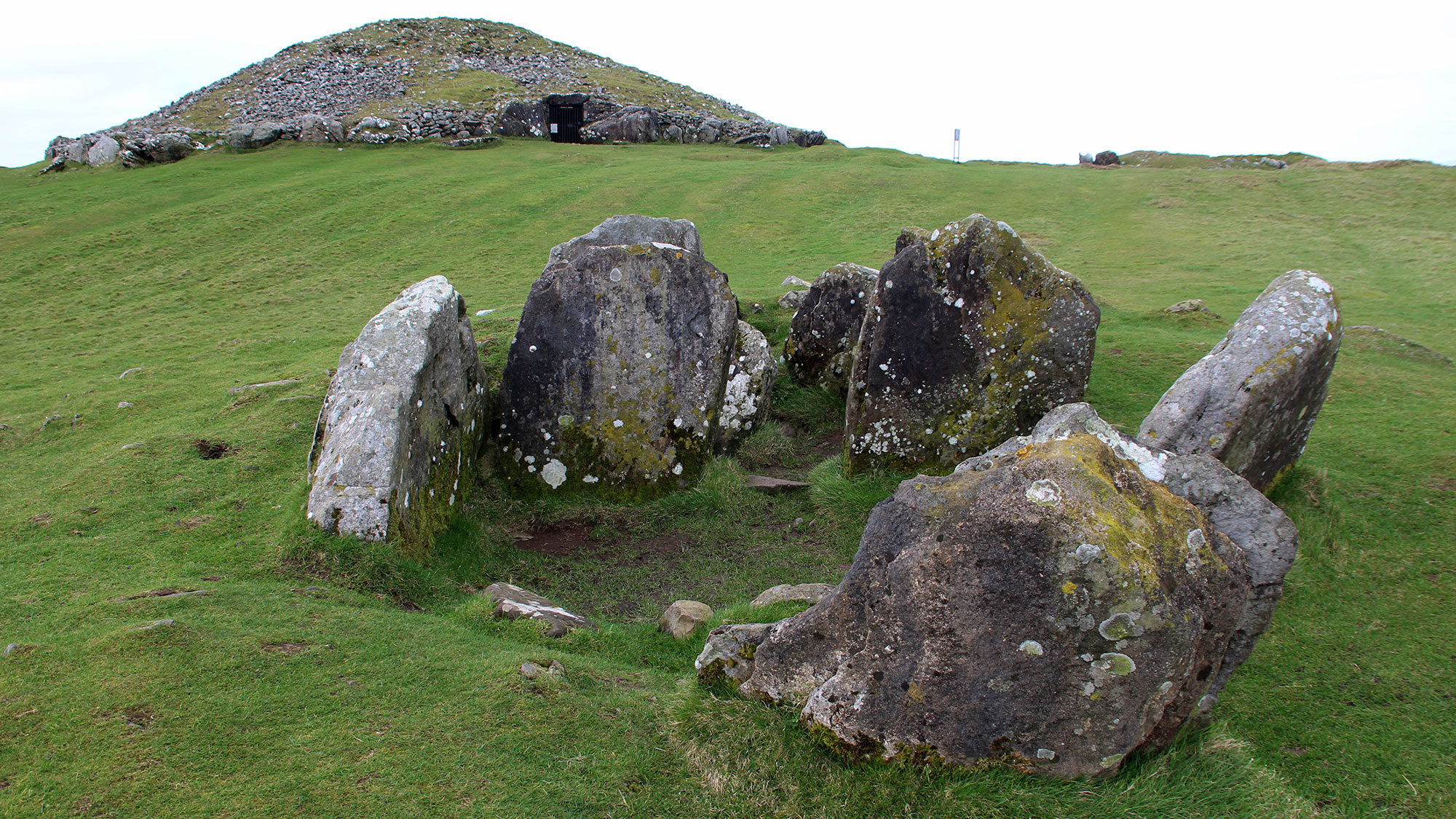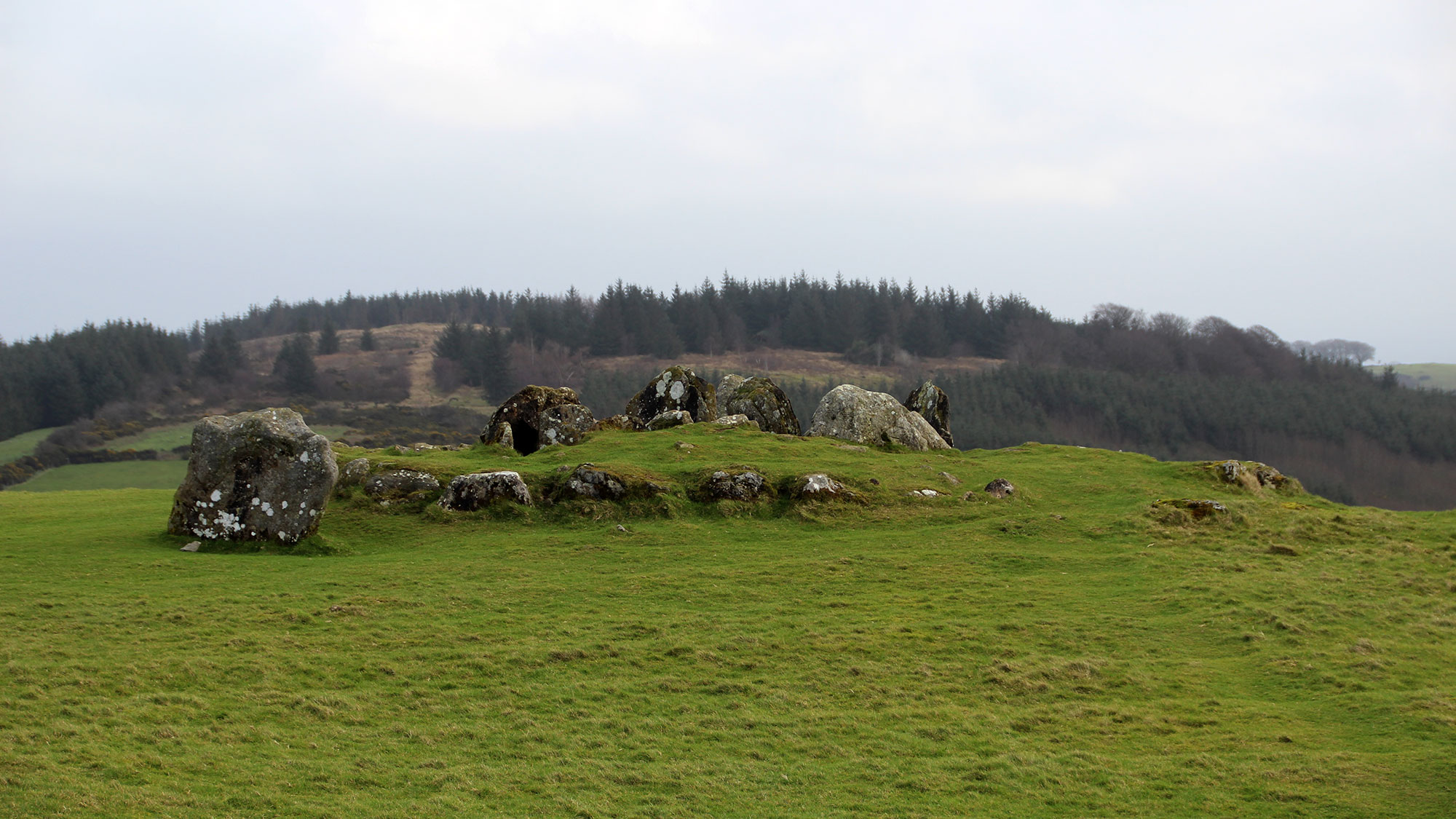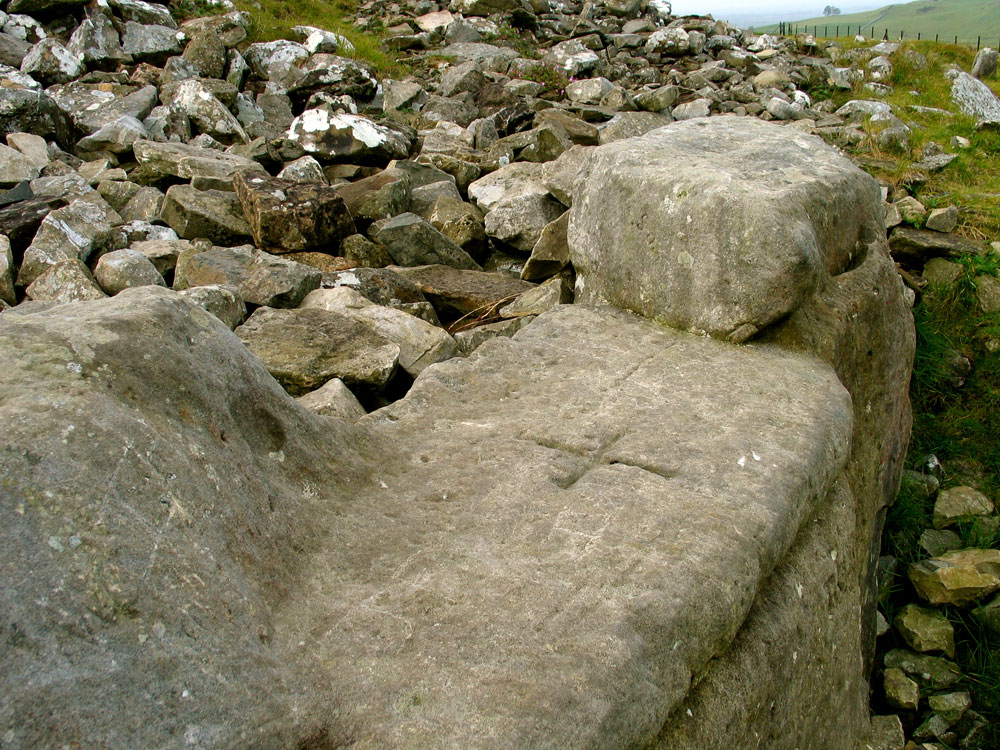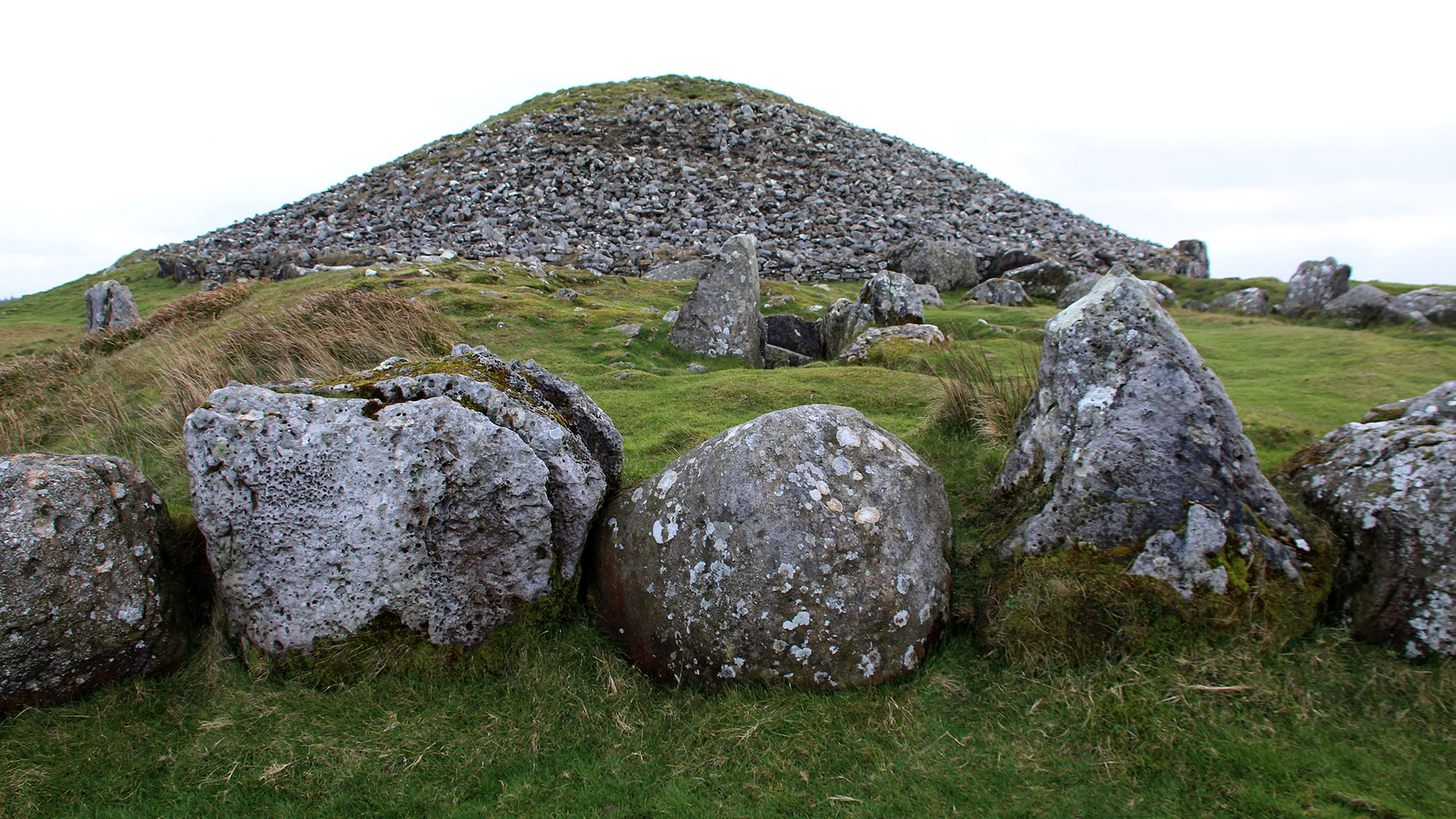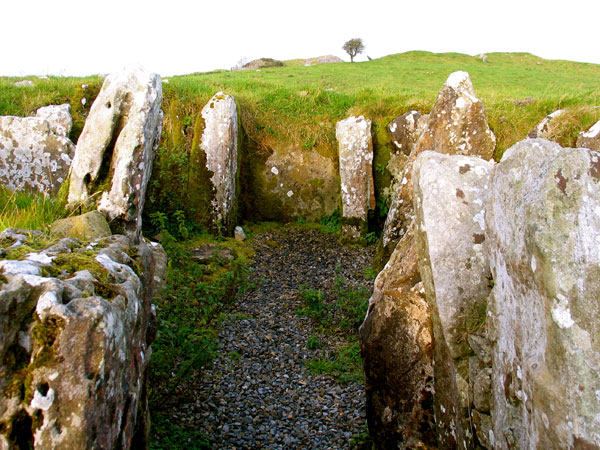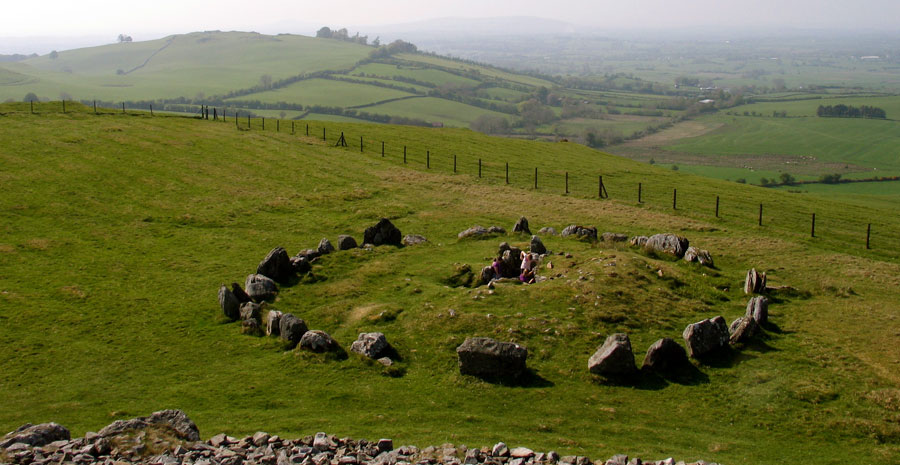The monuments at Loughcrew
The old Irish name for the Loughcrew Mountains near Oldcastle in Co. Meath is Sliabh na Cailleach, the Mountains of the Hag. The mountain tops are crowned with the remains of a large complex of chambered cairns. Though many monuments have been destroyed, it remains an awe inspiring place of breath-taking beauty, a tribute to neolithic vision.
Many of the stones within the chambers are carved with ancient engravings which most likely preceeded the monumental carved stones of the Boyne Valley.

The monuments at Loughcrew are of the type classed as passage graves, probably dating from about 3,500 BC. Loughcrew is one of the four great complexes in Ireland, the others being Carrowmore and Carrowkeel in County Sligo and the mega-monuments in Boyne Valley to the east.
Due to modern research on human remains from Carrowkeel and Ballynahatty, we now know that the people who built this type of monument were the descendants of early neolithic colonists who left Brittany around 4,200 BC and founded settlements around the coast of Ireland.
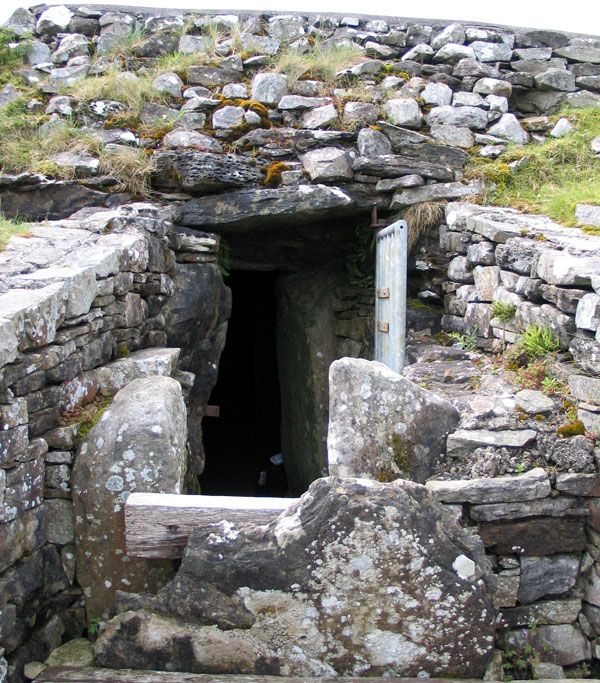
Like the Tuatha Dé Danann of Irish mythology, they brought four great treasures with them to Ireland: they introduced cattle to Ireland for the first time; they re-introduced the red deer, which had become extinct after the ice age; they brought farming with them, and they were the first to build stone chambers to bury their dead.
The early costal settlements have a simpler form of the burial monument or passage grave, such as those found at Carrowmore: a stone chamber placed on a platform with a passage connecting the chamber to the exterior of the monumument.
The Loughcrew cairns are more complex and so probably younger than the monuments at Carrowmore and Carrowkeel. The main difference between the eastern and western clusters of monuments is the presence of many carved slabs in County Meath. Loughcrew has a fine collection of megalithic art, though many stones are still exposed to the harsh Irish weather.

